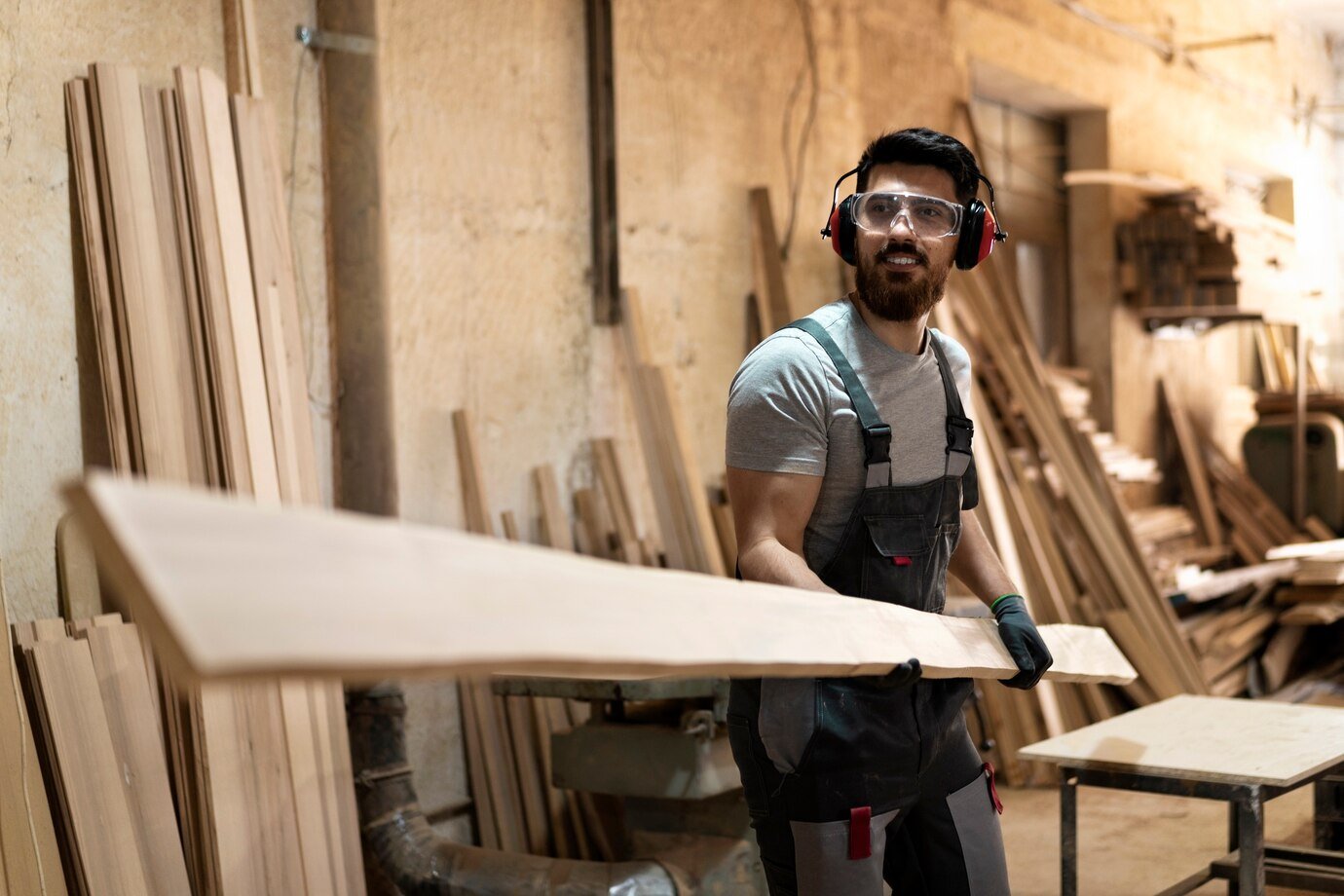CARPENTORY AND JOINERY LEVEL 1
About this course
Carpentry and joinery are skilled trades that involve working with wood to construct, install, and repair structures and fixtures. Training programs, apprenticeships, and vocational courses often break down these trades into modules to cover essential techniques, tools, and materials. Below is an outline of common modules you might find in a carpentry and joinery course:
1. Introduction to Carpentry and Joinery
Overview of the trade, career opportunities, and industry standards
Health and safety regulations (e.g., OSHA, COSHH, PPE)
Workshop safety, tool handling, and risk assessment
2. Tools and Equipment
Hand tools (chisels, saws, planes, hammers, marking tools)
Power tools (jigsaws, drills, routers, sanders)
Stationary machinery (table saws, planers, jointers, bandsaws)
Maintenance and sharpening techniques
3. Materials and Fastenings
Types of timber (softwood, hardwood, engineered wood)
Sheet materials (plywood, MDF, chipboard)
Adhesives, nails, screws, dowels, and other fixings
Moisture content, seasoning, and wood defects
4. Basic Woodworking Techniques
Measuring, marking, and cutting accurately
Jointing techniques (butt, mitre, lap, mortise & tenon, dovetail)
Planing, sanding, and finishing surfaces
Assembly and clamping methods
5. Construction Carpentry (First Fixing)
Framing walls, floors, and roofs
Installing joists, studs, and rafters
Door and window framing
Understanding building regulations and structural requirements
6. Joinery (Second Fixing)
Manufacturing doors, windows, and staircases
Skirting boards, architraves, and moldings
Built-in furniture (cabinets, shelving)
Fitting locks, hinges, and hardware
7. Site Carpentry
Reading construction drawings and blueprints
Formwork for concrete (shuttering)
Erecting partitions and cladding
Working on construction sites (teamwork, timelines)
8. Advanced Joinery Techniques
Curved work and templating
Veneering and laminating
Traditional hand-cut joints
CNC machinery and CAD for joinery
9. Restoration and Repair
Identifying and repairing historic woodwork
Replicating traditional moldings and profiles
Conservation techniques for antique furniture/buildings
10. Finishing and Surface Treatments
Staining, varnishing, and painting
French polishing and lacquering
Preventing wood decay (rot, insects, moisture protection)
11. Practical Projects and Assessments
Building small joinery items (e.g., boxes, frames)
Constructing larger structures (e.g., sheds, staircases)
Portfolio development for certifications (e.g., NVQ, City & Guilds)
Certifications & Progression
Level 1 (Introductory): Basic skills and safety
Level 2 (Intermediate): Core carpentry/joinery techniques
Level 3 (Advanced): Complex projects and supervisory skills
Apprenticeships: Combine on-site work with classroom learning
Specializations: Furniture making, heritage restoration, or construction management
Comments (0)
Carpentry and joinery are specialized trades focused on shaping, constructing, and repairing wooden structures and fixtures. This introductory module provides an overview of the profession, including career pathways such as site carpentry, bench joinery, and furniture making. Learners are introduced to industry standards, workplace ethics, and the importance of craftsmanship.
A carpenter or joiner’s work relies heavily on both hand tools and power tools. This module covers the identification, use, and maintenance of essential tools such as chisels, hand saws, planes, hammers, and marking gauges. Power tools, including jigsaws, circular saws, routers, and sanders, are examined in terms of their functions, safety precautions, and best practices for operation. Larger machinery like table saws, planers, and bandsaws are also introduced, with a focus on safe handling techniques and blade maintenance. Students learn how to sharpen and care for tools to ensure longevity and precision in their work.
First-fix carpentry involves the structural work in building construction before plastering and finishing. This module covers framing techniques for walls, floors, and roofs, including the installation of studs, joists, and rafters. Students learn how to interpret architectural drawings and follow building regulations to ensure structural integrity. Key tasks include constructing timber frames for doors and windows, installing staircases, and assembling roof trusses. The importance of precision and load-bearing calculations is emphasized, as mistakes at this stage can compromise the entire building.
Joinery focuses on the fine woodworking that comes after structural work. This module teaches the manufacture and installation of doors, windows, staircases, and cabinetry. Students learn how to craft and fit skirting boards, architraves, and decorative moldings to enhance a building’s interior. Techniques for fitting hinges, locks, and handles are also covered. Unlike rough carpentry, joinery demands a high level of detail and finish, requiring careful measurement, smooth joinery cuts, and seamless installation.
Site carpentry involves working on construction projects, often outdoors or in partially built structures. This module trains students in reading blueprints, setting out building layouts, and constructing formwork for concrete (shuttering). Learners practice erecting timber partitions, installing floor systems, and fixing roof coverings. Since site work requires coordination with other trades, the module also covers teamwork, time management, and adapting to weather conditions or logistical challenges. Safety protocols for working at heights and handling large materials are reinforced.
For those specializing in high-end woodworking, this module explores complex techniques such as curved work (e.g., arched doorways), laminating, and veneering. Students learn how to create templates for intricate designs and use specialized machinery like spindle molders and CNC routers. Traditional hand-cut joints, such as dovetails and wedged mortise and tenons, are practiced to refine craftsmanship. The module may also introduce computer-aided design (CAD) for precision joinery planning.
Restoration carpentry focuses on repairing and preserving historic woodwork. This module teaches students how to assess damage in old furniture, flooring, or structural beams and replicate original designs using traditional techniques. Learners study wood decay causes (rot, insect infestation) and methods for conservation, such as epoxy repairs and sympathetic replacements. Matching moldings, patina, and finishes to maintain historical authenticity is a key skill developed in this module.
The final appearance of woodwork depends on proper finishing techniques. This module covers staining, varnishing, and painting, including brush and spray application methods. Students learn about French polishing, lacquering, and waxing for high-end furniture. The module also addresses wood protection, including treatments for moisture resistance, UV protection, and fire retardancy. Proper sanding between coats and achieving a flawless finish are emphasized.





